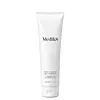What's inside
What's inside
 Key Ingredients
Key Ingredients

No key ingredients
 Benefits
Benefits

 Concerns
Concerns

 Ingredients Side-by-side
Ingredients Side-by-side

Water
Skin ConditioningCaprylic/Capric Triglyceride
MaskingStearic Acid
CleansingButyrospermum Parkii Butter
Skin ConditioningCetearyl Alcohol
EmollientCetyl Ethylhexanoate
EmollientGlycerin
HumectantGlyceryl Stearate Se
EmulsifyingBis-Diglyceryl Polyacyladipate-2
EmollientPhenoxyethanol
PreservativeAcacia Concinna Fruit Extract
Skin ConditioningBalanites Aegyptiaca Fruit Extract
Coco-Glucoside
CleansingBenzyl Alcohol
PerfumingCoconut Alcohol
EmollientCitrus Aurantium Dulcis Peel Oil
MaskingGypsophila Paniculata Root Extract
Skin ConditioningEthylhexylglycerin
Skin ConditioningSodium Hydroxide
BufferingDehydroacetic Acid
PreservativeLimonene
PerfumingLinalool
PerfumingCitral
PerfumingWater, Caprylic/Capric Triglyceride, Stearic Acid, Butyrospermum Parkii Butter, Cetearyl Alcohol, Cetyl Ethylhexanoate, Glycerin, Glyceryl Stearate Se, Bis-Diglyceryl Polyacyladipate-2, Phenoxyethanol, Acacia Concinna Fruit Extract, Balanites Aegyptiaca Fruit Extract, Coco-Glucoside, Benzyl Alcohol, Coconut Alcohol, Citrus Aurantium Dulcis Peel Oil, Gypsophila Paniculata Root Extract, Ethylhexylglycerin, Sodium Hydroxide, Dehydroacetic Acid, Limonene, Linalool, Citral
Water
Skin ConditioningSodium C14-16 Olefin Sulfonate
CleansingSodium Cocoamphoacetate
CleansingCocamidopropyl Hydroxysultaine
CleansingGlycerin
HumectantMandelic Acid
AntimicrobialCitric Acid
BufferingIsopentyldiol
HumectantMaltodextrin
AbsorbentSodium Hydroxide
BufferingSalicylic Acid
MaskingLactic Acid
BufferingTrifolium Pratense Flower Extract
AstringentGarcinia Mangostana Peel Extract
Skin ConditioningPhenoxyethanol
PreservativeCitrus Aurantium Bergamia Fruit Oil
MaskingDisodium EDTA
Lavandula Angustifolia Herb Oil
PerfumingEthylhexylglycerin
Skin ConditioningMentha Viridis Leaf Oil
AstringentPogostemon Cablin Leaf Oil
MaskingLinalool
PerfumingLimonene
PerfumingWater, Sodium C14-16 Olefin Sulfonate, Sodium Cocoamphoacetate, Cocamidopropyl Hydroxysultaine, Glycerin, Mandelic Acid, Citric Acid, Isopentyldiol, Maltodextrin, Sodium Hydroxide, Salicylic Acid, Lactic Acid, Trifolium Pratense Flower Extract, Garcinia Mangostana Peel Extract, Phenoxyethanol, Citrus Aurantium Bergamia Fruit Oil, Disodium EDTA, Lavandula Angustifolia Herb Oil, Ethylhexylglycerin, Mentha Viridis Leaf Oil, Pogostemon Cablin Leaf Oil, Linalool, Limonene
 Reviews
Reviews

Ingredients Explained
These ingredients are found in both products.
Ingredients higher up in an ingredient list are typically present in a larger amount.
Ethylhexylglycerin (we can't pronounce this either) is commonly used as a preservative and skin softener. It is derived from glyceryl.
You might see Ethylhexylglycerin often paired with other preservatives such as phenoxyethanol. Ethylhexylglycerin has been found to increase the effectiveness of these other preservatives.
Glycerin is already naturally found in your skin. It helps moisturize and protect your skin.
A study from 2016 found glycerin to be more effective as a humectant than AHAs and hyaluronic acid.
As a humectant, it helps the skin stay hydrated by pulling moisture to your skin. The low molecular weight of glycerin allows it to pull moisture into the deeper layers of your skin.
Hydrated skin improves your skin barrier; Your skin barrier helps protect against irritants and bacteria.
Glycerin has also been found to have antimicrobial and antiviral properties. Due to these properties, glycerin is often used in wound and burn treatments.
In cosmetics, glycerin is usually derived from plants such as soybean or palm. However, it can also be sourced from animals, such as tallow or animal fat.
This ingredient is organic, colorless, odorless, and non-toxic.
Glycerin is the name for this ingredient in American English. British English uses Glycerol/Glycerine.
Learn more about GlycerinLimonene is a fragrance that adds scent and taste to a formulation.
It's found in the peel oil of citrus fruits and other plants such as lavender and eucalyptus. The scent of limonene is generally described as "sweet citrus".
Limonene acts as an antioxidant, meaning it helps neutralize free radicals.
When exposed to air, oxidized limonene may sensitize the skin. Because of this, limonene is often avoided by people with sensitive skin.
The term 'fragrance' is not regulated in many countries. In many cases, it is up to the brand to define this term. For instance, many brands choose to label themselves as "fragrance-free" because they are not using synthetic fragrances. However, their products may still contain ingredients such as essential oils that are considered a fragrance.
Learn more about LimoneneLinalool is a fragrance and helps add scent to products. It's derived from common plants such as cinnamon, mint, citrus, and lavender.
Like Limonene, this ingredient oxidizes when exposed to air. Oxidized linalool can cause allergies and skin sensitivity.
This ingredient has a scent that is floral, spicy tropical, and citrus-like.
Learn more about LinaloolPhenoxyethanol is a preservative that has germicide, antimicrobial, and aromatic properties. Studies show that phenoxyethanol can prevent microbial growth. By itself, it has a scent that is similar to that of a rose.
It's often used in formulations along with Caprylyl Glycol to preserve the shelf life of products.
Sodium Hydroxide is also known as lye or caustic soda. It is used to adjust the pH of products; many ingredients require a specific pH to be effective.
In small amounts, sodium hydroxide is considered safe to use. However, large amounts may cause chemical burns due to its high alkaline.
Your skin has a natural pH and acid mantle. This acid mantle helps prevent harmful bacteria from breaking through. The acid mantle also helps keep your skin hydrated.
"Alkaline" refers to a high pH level. A low pH level would be considered acidic.
Learn more about Sodium HydroxideWater. It's the most common cosmetic ingredient of all. You'll usually see it at the top of ingredient lists, meaning that it makes up the largest part of the product.
So why is it so popular? Water most often acts as a solvent - this means that it helps dissolve other ingredients into the formulation.
You'll also recognize water as that liquid we all need to stay alive. If you see this, drink a glass of water. Stay hydrated!
Learn more about Water